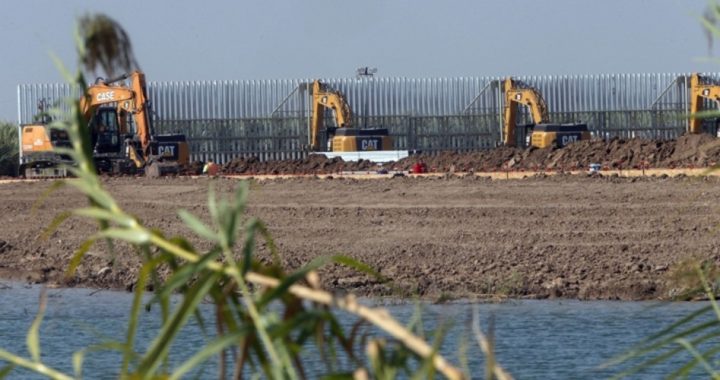
Podcast: Play in new window | Download ()
Subscribe: Android | RSS | More
President Trump is planning to divert an additional $7.2 billion from Department of Defense programs to pay for the wall on the United States’ southern border. Approximately half of that amount will come from military counter-drug enforcement, and the remainder from DOD construction projects to be used for additional border fencing projects.
The Washington Post reported on January 13 that the funding would give the government enough money to complete about 885 miles of new fencing by spring 2022, which is considerably more than the 509 miles the administration has slated for the U.S.-Mexican border.
Building the border wall was one of Trump’s most important campaign promises in 2016, but securing funding to build the wall from the Democratic-controlled House of Representatives has presented him with a formidable roadblock.
Using the limited amount of funding Congress was willing to authorize, the administration has managed to start construction on small sections of the wall.
In December 2018, Trump shut down part of the government for 35 days after he refused to sign a bipartisan spending bill to fund the government in 2019 because it did not include $5.7 billion in funding for the wall. Finally, Congress compromised to give the president $1.375 billion for “existing technologies,” such as the current fencing at the southern border.
After that standoff with Congress, in February 2019, Trump declared a national emergency (10 U.S.C. 2808 (a)) under the National Emergencies Act to unlock billions of dollars in federal funds to use to build a wall. The National Emergencies Act, enacted in 1976, empowers the president to activate special powers during a crisis. It identifies and defines 136 such emergency powers, which are tracked by the Brennan Center for Justice, among others.
An article in Vox on January 14 explored the question of which existing laws Trump might cite to access funding for the wall under his emergency declaration. The report quoted Kim Lane Scheppele, a professor at the Center for Human Values at Princeton University, who said, “It could be that by putting together a lot of different sources of emergency authority, the president could tap a lot of different funds and at least start [funding the wall]”
Scheppele named several preexisting laws the president could potentially use:
He could, for example, reallocate military spending on construction projects for the wall. One law allows the defense secretary, after a national emergency declaration, to direct the army’s civil works program to construct a structure needed for national defense and use the military budget to do it. Another lets the secretary direct other military services for construction projects.
It appears that the president is utilizing one or more of these options.
The decision to divert funds was not met with unanimous enthusiasm, even from some Republican senators who support building of the wall.
Senator John Cornyn (R-Texas) called Trump’s reported plan an “unfortunate outcome,” but he blamed Democrats for their unwillingness to meet the president’s requests to fund the border wall.
“I wish it wasn’t necessary,” Cornyn said. “The problem is, Congress has failed to appropriate adequate funds for border security, which is the reason his hand was forced.”
Photo: AP Images
Warren Mass has served The New American since its launch in 1985 in several capacities, including marketing, editing, and writing. Since retiring from the staff several years ago, he has been a regular contributor to the magazine. Warren writes from Texas and can be reached at [email protected].
Related articles:
CBP To Use Existing Funds to Begin Border Fences and Walls In Texas
Trump Signs Executive Orders to Build Border Wall and Strengthen Immigration Enforcement
Trump Criticizes Media and Says Mexico Will Pay Back U.S. for Border Wall
Trump Transition Immigration Advisor: Wall Will Be Built
Don’t Just Blame Pelosi; Lack of Border Wall Funding Is Bipartisan




